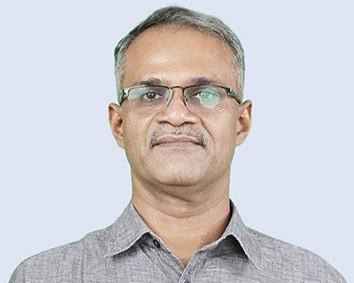A new study by the regional office of the Food and Agriculture Organisation (FAO) in Bangkok, Dynamic Development, Shifting Demographics, Changing Diets, has put together data on trends and key changes in agriculture and nutrition in the Asia-Pacific region. Malnutrition, it was found, was not of public health significance in only three countries of the region: Japan, the Republic of Korea (South Korea), and Singapore. The study was published in 2018.

I focus here on the findings of Chapter 4, titled “Diets are diversifying with implications for farmers and nutrition,” which have relevance for food security and nutrition in India.
The first finding of import and basis for further study is, of course, the “multiple burden of malnutrition.” The study uses three indicators of malnutrition (A) incidence of child stunting (B) incidence of child micronutrient deficiency and (C) incidence of adult obesity. Thirty two countries of the Asia-Pacific region are classified by the prevalence of one or more forms of malnutrition (that is, where the incidence of either A, B, or C is more than 20 per cent of the population). A large number of countries, including India, are in category AB (that is, where there is more than 20 per cent incidence of child stunting and child micronutrient deficiency). All the countries of South Asia except Sri Lanka were characterised by high levels of stunting and child micro-nutrient deficiency. A few countries, including Sri Lanka, are in category B (high child micronutrient deficiency but not high child stunting), and the richer countries of the region, Australia and New Zealand are in category C (high adult obesity).
Table Multiple Burdens of Malnutrition in the Asia-Pacific Region
| Category AB Asia Afghanistan, Bangladesh, Bhutan, Cambodia, India, Indonesia, DPRK Korea, Lao PDR, Maldives, Mongolia, Myanmar, Nepal, Pakistan, Papua New Guinea, Philippines, Timor-Leste, and Viet Nam |
| Category B Asia Brunei Darussalam, China, Malaysia, Sri Lanka, and Thailand |
| Category BC Oceania Samoa and Tuvalu |
| Category ABC Oceania Nauru, Solomon Islands, and Vanuatu |
| Category C Oceania Australia and New Zealand |
| No malnutrition problem of public health significance Asia Japan, Republic of Korea, Singapore |
Notes:
A refers to an incidence of child stunting of over 20 per cent;
B refers to an incidence of child micronutrient deficiency of over 20 per cent; and
C refers to an incidence of obesity of over 20 per cent.
The authors assume that the problem is of public health significance if prevalence exceeds 20 per cent.
By this definition, malnutrition was “not of public health significance” in three countries of the Asia-Pacific: Japan, the Republic of Korea (South Korea), and Singapore. We can all learn from the dietary practices of the Japanese, Koreans, and Singaporeans.
Having identified the problem, the chapter then examines data from 1990 to 2013 on consumption patterns (consumption or apparent consumption here is taken from the FAO food balance sheets and derived from output data: production plus imports minus export, stock accumulation and quantity kept for seed, feed and waste.)
There are clear changes in consumption patterns over time: growth in consumption of starchy staples, especially rice is slowing down, while that of fruit and vegetables and animal-source foods is rising. The consumption of cereals and starchy roots has declined slightly in East Asia and South Asia and started to level off in other regions.
It is well known that dietary diversity — and especially the consumption of fruit and vegetables — is important for better nutrition because they help to ensure balanced macronutrient and micronutrient intake. Overall, the consumption of animal-source foods (meat, milk, eggs, fish, and seafood) and fruit and vegetables has risen in the region. However, in both food groups, the most rapid rise in consumption was observed in East Asia, followed by South East Asia. In South Asia, the rise in consumption of these two food groups has been very slow. Surprisingly, while the consumption of pulses has risen in South Asia, the level of consumption (about 120 Kcal a day) is below the level achieved in the 1960s (180 Kcal a day).
So, what factors can help increase dietary diversity in South Asia?
One crucial factor is income. As incomes rise, the consumption of staples declines and that of other food groups rises. Data on income or wealth quintiles within selected countries confirms this pattern.
A related and relevant factor is the price of different foods, as this determines affordability for poor households. An important finding of this study is that in most countries, food price inflation has been higher than general inflation (the food price sub index of the Consumer Price Index was compared with the Consumer Price Index). And, within the food group, the price of fruit and vegetables has risen faster than the price of other foods.
Going forward, if low income households have to diversify their diets, without waiting for the long run when their incomes are higher, then we have to be concerned with the price of fruit and vegetables as well as other foods. As the book states “the increased prices for fruits and vegetables make it more difficult for consumers to afford a nutritious diet, particularly the poor, because price elasticities are greater for the poor than for the rich … the high prices may particularly affect the urban poor. This is not to ignore the price of staple foods, as they account for a large fraction of the expenditure of poor households.”
Lastly, as the FAO study recognises, production patterns too need to change, by means of greater crop diversification. China is way ahead in this respect, as the area harvested of fruit and vegetables now exceeds that of any single cereal crop. “Crop diversification at the national level does not imply crop diversification at the level of individual farms.” This is an important point, especially for those who argue that the problem of micronutrient malnutrition can be overcome by diversifying production on small farms.
About the author
Madhura Swaminathan is Professor and Head, Economic Analysis Unit, Indian Statistical Institute Bangalore Centre. She is also a Trustee of the Foundation for Agrarian Studies.
















































































